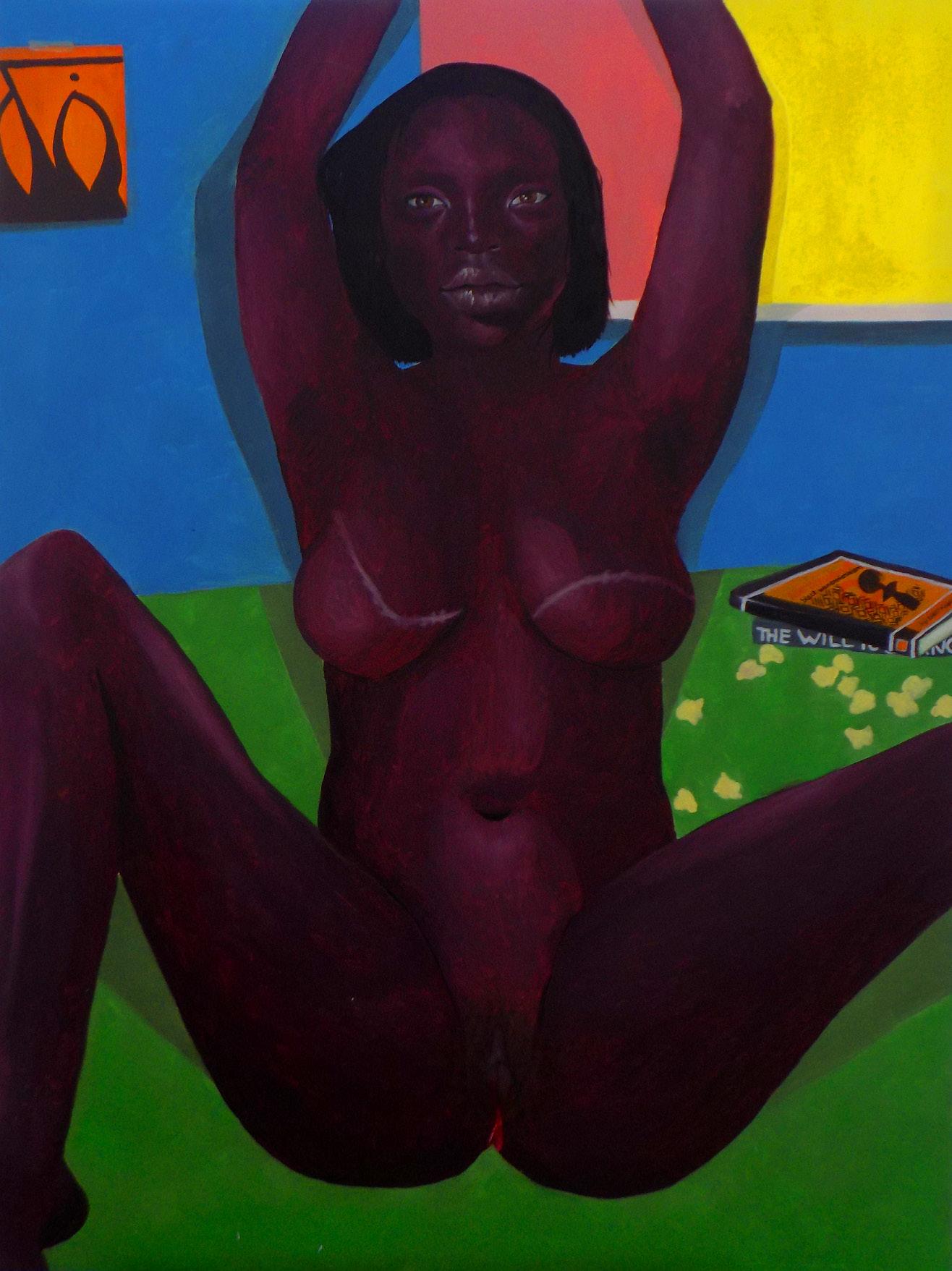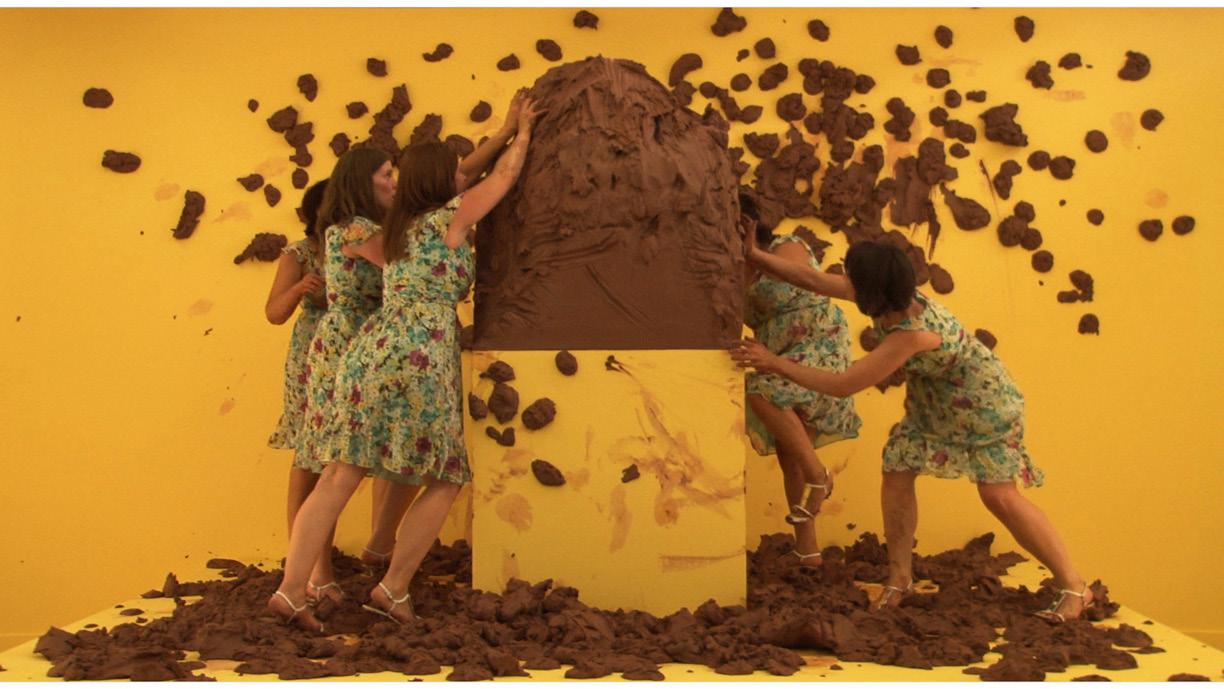
5 minute read
Introduction
Brittany Cassell
By Piper Ross Ferriter
Advertisement
The women in Brittany Cassell’s paintings will not relinquish the inside of my eyelids. They haunt me. But not in an ominous, terrifying way. They haunt me like déjà vu. They linger like shadows. They represent a connection to something I do not know but which knows me. That Which Does Not Burn (2016) and Ain’t I a Woman/The Will to Change (2015) will undoubtably draw comparisons to Frida Kahlo’s portraiture for their shared, magical realism. Cassell’s figures are placed in indiscernible locations, prone to alarming wounds, and defiantly stare out from their respective canvases with a self-awareness unsettling in a painted subject. As magical realist artworks, their subjects and circumstances are fundamentally authentic with just a dash of creative license. A splash of special sauce. Cassell’s magic ingredient is memory; she uses the murky medium of memory to explore how the accumulated pasts of her female forbears inform her present and future. Cassell was initially inspired to investigate collective memory and intergenerational impressions by the ever-present, existential question: who am I? What decides how we are defined? Is identity predestined, assigned, or self-constructed? She endeavored to uncover the roots of her burgeoning self in an effort to elucidate her germination. But the individual and universal quickly confounded; Cassell’s ancestral and personal journeys are unequivocally her own yet remain remarkably relatable. The classical nudity of her enigmatic women imbues them with archetypal authority while magical realist elements sustain their accessibility. By blurring the barrier between actual and metaphorical, Cassell provides viewers the space to imagine their own actual and metaphorical inheritances. Likewise democratizing, the situational ambiguity of a deserted landscape and reticent interior emphasizes personhood over place. Unanchored, these women could be anywhere just as easily as everywhere. Even the books in Ain’t I a Woman/The Will to Change are unrevealing—they are its namesake. The works’ unfettered relevance is further perpetuated by their temporal fluidity. Cassell dialectically navigates past, present, and future as she visually collapses their distinctions by eschewing indications of time and depicting her protagonists at her current age. Just as search engine algorithms generate future results from former selections, so Cassell demonstrates how, when then begets now which becomes will be, temporal boundaries dissolve. The paintings float in a reservoir preserved from place and time; their figures are the only islands in sight. And like a map within its map, they embody their self-scrutinizing anachronism: espousing a prior era’s artistic movement in today’s post-artistic movement era. Beyond the canvas, the art’s titles offer additional layers of representation and lenses of interpretation. That Which Does Not Burn is a direct translation of hye won hye, the West African adinkra, or visual aphorism, symbolizing imperishability and endurance. The hye won hye’s feminine and resolute articulation implausibly recalls both female genitalia and branding irons. It wis so closely aligned with Cassel’s pronounced, visual vocabulary, this adinkra could be the pictorial pattern of her lexicon. Ain’t I a Woman/ The Will to Change combines the titles of the two texts depicted in the work by feminist author and social activist bell hooks: The Will to Change: Men, Masculinity, and Love (2004) and Ain’t I a Woman: Black Women and Feminism (1981). Cassell’s titles are significant for their ability to communicate meaning to the uninitiated as well as to those who seek their deeper references. They are also cleverly meta; knowing Cassell might provide a glimpse of her character, but knowing her origins, priorities, and preoccupations will provide insight. The titles reflexively exemplify her visual distillation of identity. They are the next matryoshka doll or a contextual map of the same territory. But they are not calques. Calques are linguistic words or phrases generated by literally translating the term from its original language into another language. Cassell’s paintings are not calques because they are not word-for-word translations. In terms of representation, a one-to-one ratio is utterly useless; it fails to represent but produces an identical model instead. Her intergenerational inquiry into how cultural history and collective memory shape individual identity and experience does not indicate they are facsimiles of each other. Her conclusion is more analogous to magical realism’s relationship with reality in that reality provides the foundation but magic makes it unique. Or how the map is not the territory but a mere representation of the territory. Or the Japanese pottery practice of kintsugi which uses precious metals to conspicuously mend fractures; in lieu of glue’s lackluster concealer, glittering gold or silver scars reunite ceramic shards and celebrate the beauty of imperfection. Like kintsugi, cultural history and collective memory are the elemental fragments of identity, though it is the shape those fragments take when gilded together that forms an individual’s identity. We are not the products of an assembly line. We may be dented, cracked, and chipped—but we are gold.
Brittany Cassell, That Which Does Not Burn, Oil on canvas, 2016. Brittany Cassell, Ain’t I a Woman/The Will to Change, Oil on canvas, 2015.

Kate Gilmore
By Piper Ross Ferriter
Kate Gilmore’s video Sudden as a Massacre (2011) is 30 minutes of catharsis. Four women dressed identically in floral frocks and silver sandals tear into a 7,000-pound cube of clay and hurl it by the handful at the cheerfully yellow wall and floor that set the stage. Their zeal never abates, though their pace slows and breathing intensifies as their foe is laboriously decimated. Shoes are sacrificed. In contrast to the linguistic gymnastics preferred by the political zeitgeist, physical mudslinging looks appealingly productive. Gilmore has a penchant for filming women in cocktail attire as they struggle to complete arbitrary yet arduous tasks. The scenarios are relentlessly absurd. Her tragicomic endeavors mimic the real-life ridiculousness females face on a daily basis: the wage gap, double-standard, appearance, inadequate healthcare, media scrutiny, appearance, overpriced healthcare, the politicized uterus, appearance, the politicized definition of consent, and societal expectations. As well as appearance. Because ladies are supposed to do everything not only all of the time, but also in heels and wearing lipstick. Your hair better be perfect. And don’t forget to smile. The women of Sudden as a Massacre attack the block of clay like it is the manifestation of all patriarchal obstacles. They are the matching bridesmaids in feminism’s commitment to itself. It takes a certain level of resolve to continue fighting for the same rights for over a century—those being merely equal rights. Nothing special. Nothing gratuitous. Nothing the male population is not amply afforded. Yet the struggle continues. Frequently, it feels farcical. Like this must be scripted satire. Could we be trapped in a looping Gilmore performance? If only. There we might actually accomplish something. But the parroted themes of my News Feed suggest stagnant stasis. The incessant, pitter-patter of clay hitting a hard surface in Sudden as a Massacre is the metronomic march of the female frontline: the beat goes on. Resist, insist, persist, enlist. Grab a fistful and take aim.

Kate Gilmore, Sudden as a Massacre, Video, color, sound, 39:25 minutes, 2011.






